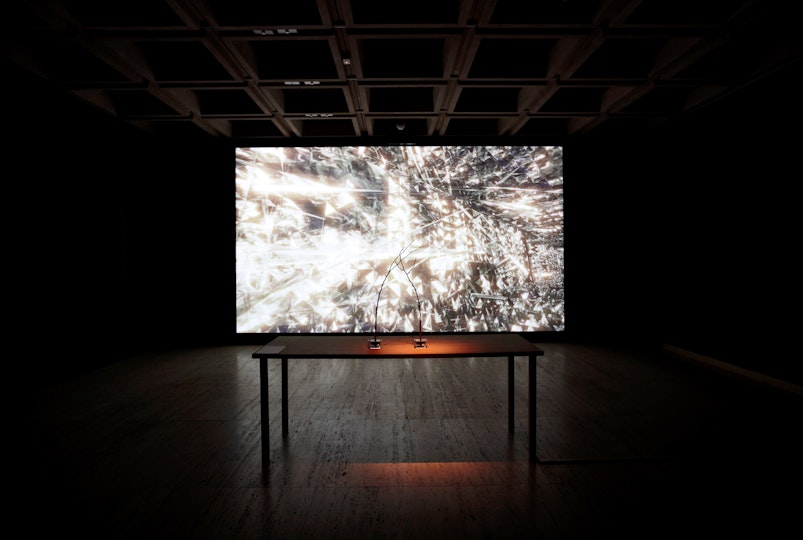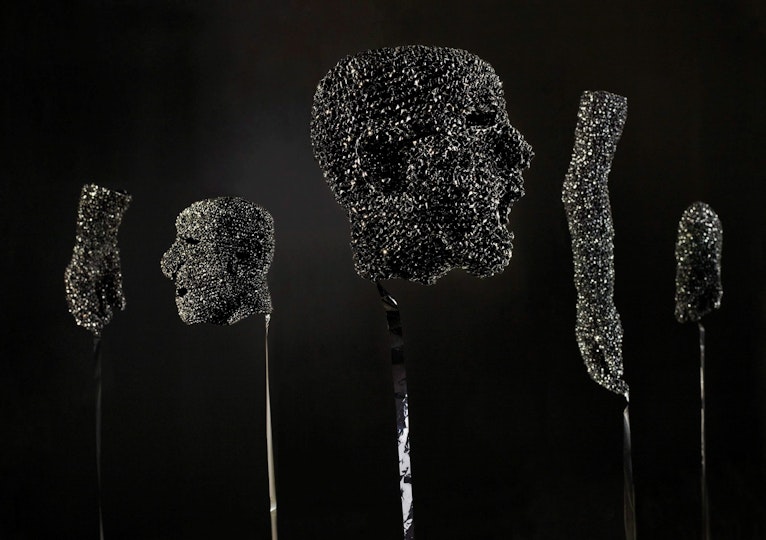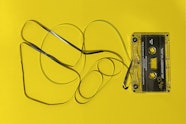What Does the Jukebox Dream Of?
![Susan Hiller [w[Die gedanken sind frei (Thoughts are free)]] 2012, Art Gallery of New South Wales © Susan Hiller](https://www.datocms-assets.com/42890/1632280840-337-2017-mm.jpg?fit=max&h=540&iptc=allow&max-w=1024)
Susan Hiller Die gedanken sind frei (Thoughts are free) 2012, Art Gallery of New South Wales © Susan Hiller

David Haines and Joyce Hinterding The outlands 2011, Art Gallery of New South Wales © David Haines and Joyce Hinterding

Fiona Hall Slash and burn 1997 (detail), Art Gallery of New South Wales © Fiona Hall
Showcases some of the most intriguing works from the Art Gallery’s time-based art collection
What Does the Jukebox Dream Of?
Art Gallery of New South Wales
Naala Badu, our north building
Lower level 2
Free
Videogame joysticks, a fossilised radio, VHS tapes spun into haunting life-size figures ... this exhibition reanimates supposedly defunct media.
On display for the first time in Australia, Susan Hiller’s Die gedanken sind frei (Thoughts are free) 2012 is a large-scale installation featuring a customised Wurlitzer jukebox which plays more than 100 revolutionary anthems, spanning 16th-century German peasant ballads to anti-fascist folksongs and contemporary rap. Relocated from its more common setting of the mid-20th-century diner to a shrine-like space, Hiller’s jukebox invites visitors to choose a song and set the soundtrack for the exhibition, which also includes works such as Paul Chan’s Oh why so serious? 2008, David Haines and Joyce Hinterding’s The outlands 2011, Fiona Hall’s Slash and burn 1997, Callum Morton’s Screen #7 Here and There 2006 and Ricky Swallow’s Idol with handle 1997–2007 as well as a series of photographs by Max Dupain.
Disrupting a naturalised, linear story of technological development – where the Walkman is eclipsed by the iPod and so on – the exhibition celebrates the playful ways in which artists envision emancipatory new uses for ‘obsolete’ technologies.
-
Visit information and accessibility
Visitors are advised that this is a high-sensory experience with sound and flashing light.
The exhibition includes song lyrics that use explicit language.
Children under 12 must be supervised by an adult at all times.
Please ask a host if you’d like further information or suggestions about any aspects of the exhibition.
For more information about visiting, including physical access and facilities, see Plan your visit
For more information about our family and access programs, see Events
